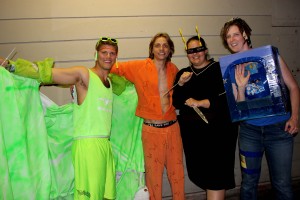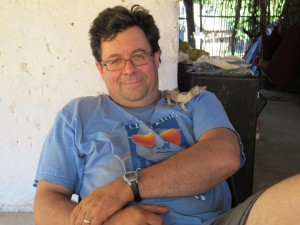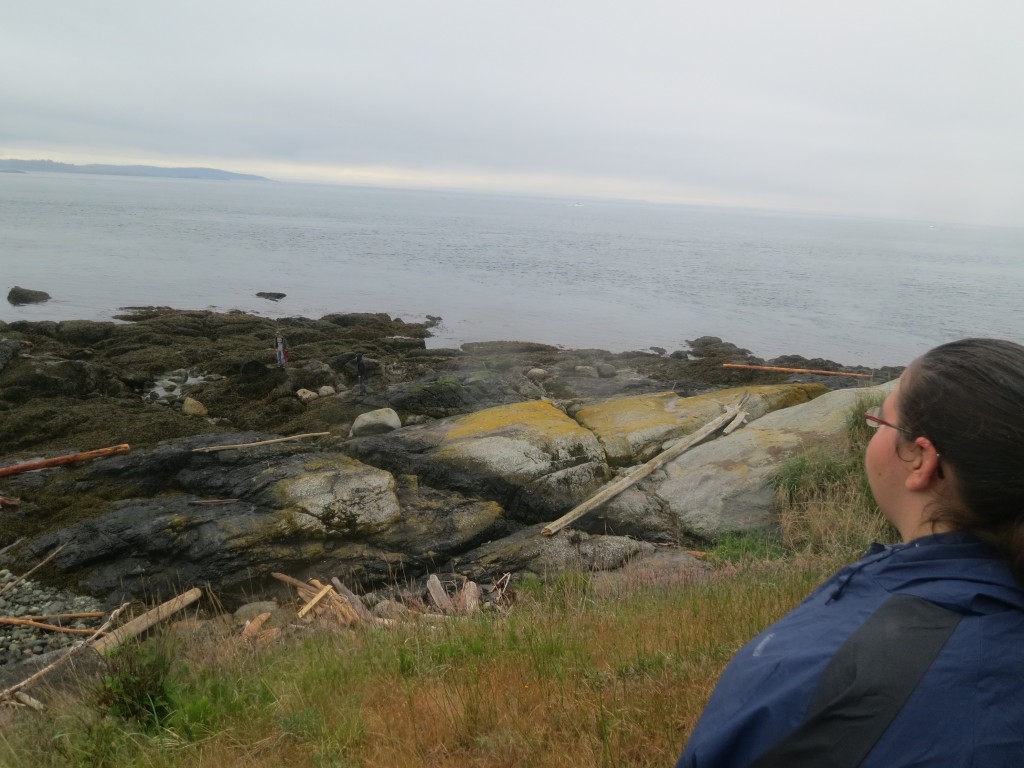At Friday Harbor Labs, the biggest party of the year is the Invertebrate Ball. Everyone dresses up as their favorite invertebrate or invertebrate-related pun, there are judges and prizes and invert-themed snacks, and the dancing goes late into the night. McDaniel was well represented!

From left to right: Joe "Noctiluca" Odierno, Steve "Ophlitaspongia" Hein, Deanna "Assassin Snail" Campell, Molly "Internal Wave" Jacobs
An explanation of the costumes:
Joe: Noctiluca is a free-living marine dinoflagellate famous for bioluminescence – these tiny single-celled organisms release brilliant green flashes of light when they are disturbed. During a bloom at night, boats leave green glowing wakes and swimmers are surrounded by sparkles. The outside of Joe’s cape was a nondescript gray, allowing him to flash the luminescent interior at appropriate moments. He won a “people’s choice” award for this costume!
Steve: Ophlitaspongia is a genus of marine sponges, often found in the local intertidal. They are bright orange in color. Most predators and grazers leave them alone due to their chemical defenses, but if you look closely you can often see a small specialist nudibranch predator (Rostanga sp.)
Deanna: The assassin snail Clea helena is a small tropical freshwater snail, known as a deadly predator of other snails. You can’t see the back of her costume in this photo, but she had a shell displaying the typical black and yellow stripes.
Molly: An internal wave is an oceanographic phenomenon – we’re all used to waves that propagate on the surface, but waves can also propagate under the surface, usually along interfaces between upper and lower bodies of water (for example, along a thermocline or halocline). Small planktonic organisms (shown in the pictures on the box and my shirt) often collect at these interfaces. My costume showed these organisms along an interface, and I also waved internally (from inside the box).





